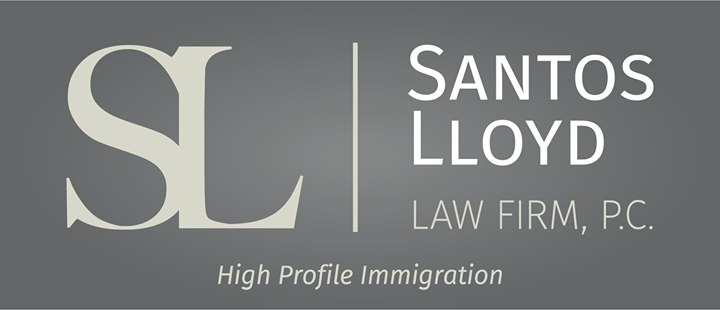O Ato de Proteção do Status de Criança (CSPA) pode preservar a minha elegibilidade para o Green Card?
Click here to read this article in English
A Lei de Imigração e Nacionalidade (INA) define uma criança como alguém que seja solteiro e tenha menos de 21 anos de idade. Se alguém solicita o status de residente permanente legal (LPR) como uma criança, mas completa 21 anos antes de ser aprovado para o status de LPR (também conhecido como obter um Green Card), essa pessoa não pode mais ser considerada uma criança para fins de imigração. Essa situação é comumente chamada de "envelhecimento" e frequentemente significa que esses solicitantes teriam que apresentar uma nova petição ou aplicação, esperar ainda mais para obter um Green Card ou talvez não sejam mais elegíveis para um Green Card.
O Congresso reconheceu que muitas crianças estavam envelhecendo devido aos grandes atrasos no processamento da USCIS, então promulgou o Ato de Proteção do Status de Criança (CSPA) para proteger certas crianças do envelhecimento.¹ O CSPA entrou em vigor em 6 de agosto de 2002.
O CSPA não altera a definição de uma criança. Em vez disso, o CSPA fornece um método para calcular a idade de uma pessoa para ver se ela atende à definição de criança para fins de imigração. A idade calculada é a "idade CSPA" da criança. Isso permite que algumas pessoas permaneçam classificadas como crianças além do seu 21º aniversário. No entanto, o CSPA não altera o requisito de que você deve ser solteiro para permanecer elegível para a classificação como criança.
O CSPA se aplica apenas às seguintes pessoas:
- Parentes imediatos (incluindo derivados de viúvos(as));
- Solicitantes principais de preferência com base em parentesco e solicitantes derivados;
- Auto-peticionários e solicitantes derivados da Lei de Violência Contra a Mulher (VAWA);
- Solicitantes derivados de preferência com base em emprego;
- Solicitantes derivados do Visto de Diversidade Imigrante (DV);
- Refugiados derivados; e
- Asilados derivados.
Se você está solicitando um Green Card com base em uma das categorias acima, você é elegível para consideração pelo CSPA se o seu Formulário I-485, Solicitação de Registro de Residência Permanente ou Ajuste de Status, qualificativo ou um dos formulários subjacentes a seguir foi arquivado ou pendente em ou após 6 de agosto de 2002:
- Formulário I-130, Petição para Parente Estrangeiro;
- Formulário I-360, Petição para Amerasiano, Viúvo(a) ou Imigrante Especial;
- Formulário I-140, Petição de Imigrante para Trabalhador Estrangeiro;
- Formulário I-526, Petição de Imigrante por Empresário Estrangeiro;
- Formulário I-589, Solicitação de Asilo e de Retenção da Remoção;
- Formulário I-590, Registro para Classificação como Refugiado; ou
- Formulário I-730, Petição de Parente de Refugiado/Asilado.
O cálculo do CSPA para parentes imediatos é diferente do cálculo para imigrantes de preferência familiar e empregados.
Se você é um parente imediato, um cônjuge ou filho abusado que se auto-peticiona pelo VAWA, ou um filho derivado de um cônjuge ou filho abusado que se auto-peticiona pelo VAWA, sua idade é congelada na data em que o Formulário I-130 ou Formulário I-360 é arquivado. Se você tinha menos de 21 anos na época em que a petição foi arquivada, você é elegível para o CSPA e não envelhecerá. No entanto, você deve permanecer solteiro para se qualificar.
Se você é um solicitante de preferência familiar (incluindo auto-petição pelo VAWA), preferência baseada em emprego ou visto de diversidade imigrante (DV), calcule sua idade CSPA subtraindo o número de dias em que sua petição esteve pendente (tempo pendente) de sua idade na data em que um visto de imigrante estiver disponível para você (idade na data de disponibilidade do visto). No entanto, você deve permanecer solteiro para se qualificar.
A fórmula para calcular o CSPA é:
Idade na Data de Disponibilidade do Visto - Tempo Pendente = Idade CSPA
Exemplo:
Você tem 21 anos e 4 meses quando a USCIS considera um visto de imigrante disponível para você. Sua petição esteve pendente por 6 meses. Calcule sua idade CSPA da seguinte forma:
21 anos e 4 meses - 6 meses = 20 anos e 10 meses
Idade na Data de Disponibilidade do Visto
A data em que o visto é considerado disponível é a mais recente destas duas datas:
- A data em que a petição foi aprovada; ou
- O primeiro dia do mês em que a USCIS considera um visto disponível para arquivar um pedido de ajuste de status com base na sua categoria de preferência de imigrante, país de atribuição e data de prioridade. Você deve verificar o
site da USCIS para determinar qual dos 2 gráficos (Datas para Arquivamento ou Datas de Ação Final) do Visa Bulletin do Departamento de Estado (DOS) você pode usar para arquivar um pedido de ajuste de status.
Você precisará usar o Visa Bulletin (consulte o artigo relacionado em nosso site para entender o Visa Bulletin e a retrogressão) para concluir o cálculo e determinar o momento apropriado da disponibilidade do visto.
**Houve uma recente mudança na política da USCIS em relação a esta parte do cálculo do CSPA!**²
A mudança recente na política permite o uso do Gráfico B, Datas para Arquivamento (data mais precoce em que os solicitantes podem ser capazes de se candidatar), para determinar quando a idade ajustada é calculada, em vez do Gráfico A, Datas de Ação Final (datas em que os vistos podem finalmente ser emitidos). Antes da mudança, a agência exigia que as crianças usassem o Gráfico A.
Tempo Pendente
O período de tempo em que uma petição estava pendente (tempo pendente) é o número de dias entre a data em que é devidamente arquivada (data de arquivamento) e a data de aprovação.
A fórmula que determina o tempo pendente da petição é a seguinte:
Data de Aprovação - Data de Arquivamento = Tempo Pendente
Exemplo:
Sua mãe arquivou uma petição para você em 1 de fevereiro de 2016. A petição foi aprovada em 1 de agosto de 2016.
1 de agosto de 2016 - 1 de fevereiro de 2016 = 6 meses
Buscando adquirir os requisitos
Para se beneficiar do CSPA como solicitante de preferência familiar (incluindo auto-petição pelo VAWA), preferência com base em emprego ou solicitante de visto de diversidade imigrante (DV), você deve buscar adquirir o status de residente permanente legal dentro de 1 ano a partir do momento em que um visto estiver disponível para você para arquivar uma aplicação de ajuste de status. Isso é conhecido como o requisito de "busca para adquirir".
Você pode cumprir esse requisito ao:
- Arquivar corretamente o Formulário I-485, Solicitação de Registro de Residência Permanente ou Ajuste de Status;
- Enviar a Parte 1 preenchida do Formulário DS-260, Solicitação Eletrônica de Visto de Imigrante;
- Pagar a taxa de visto de imigrante ao DOS.
A mudança na política também afeta quando começa o requisito de arquivamento de um ano. Sob a política anterior, os solicitantes podiam esperar até que a data de prioridade se tornasse atual no Gráfico A para tomar medidas. Agora, eles devem prestar atenção a cada mês para saber se a USCIS permite que os solicitantes usem o Gráfico B para fins de arquivamento. Se for o caso, o período de um ano começa naquele mês, não quando a data de prioridade se torna atual usando o Gráfico A.
Eu sei que tudo isso parece extremamente complexo e confuso, muitos profissionais de imigração também acham! Portanto, foi desenvolvida uma calculadora online para ajudar no cálculo do CSPA, e o link para essa calculadora online está abaixo:
https://www.immihelp.com/cspa-calculator/
Se você tiver perguntas adicionais sobre o CSPA ou acreditar que esse cálculo possa se aplicar ao seu caso, entre em contato com nosso escritório para obter assistência profissional!
Este blog não se destina a fornecer aconselhamento jurídico e nada aqui deve ser interpretado como estabelecimento de um relacionamento advogado-cliente. Por favor, agende uma consulta com um advogado de imigração antes de agir com base em qualquer informação lida aqui.






